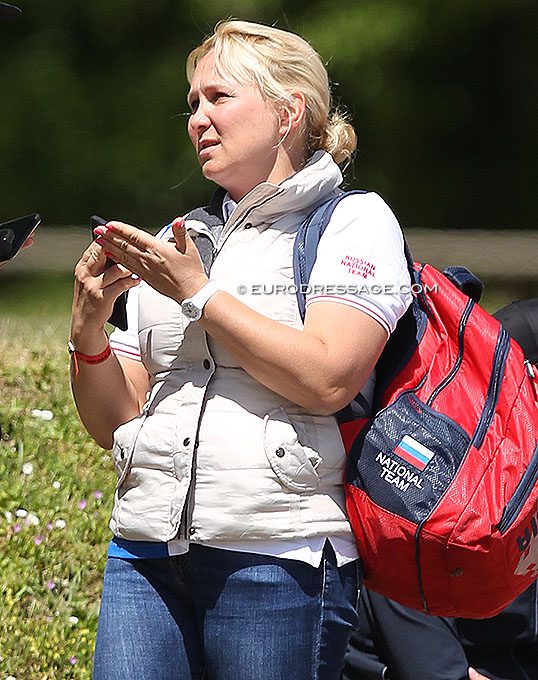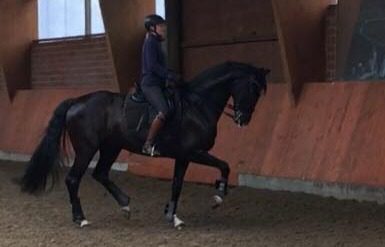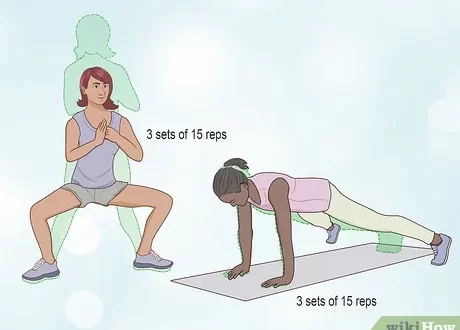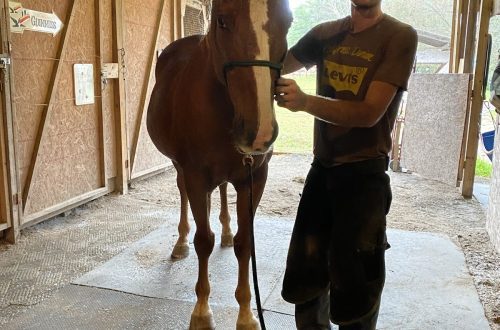
#ProkoniBestExercises: Tatyana Kosterina about working with mares, pirouettes and more
We continue the #ProkoniBestExercises dressage section, this time we made it even more interesting! And nowToday our guest is Tatyana Kosterina, a rider from Nizhny Novgorod based in Germany. Tatyana is an international master of sports in dressage, prize-winner and winner of many international competitions, paired with her main high-prize horse Diavolessa, she occupies 74th place in the world ranking. The sportswoman has extensive experience with mares, she knows how to find an approach to capricious ladies and reveal their talent! About this and not only we managed to talk with Tatyana 🙂
Prokoni: What features of working with mares can you highlight? What exactly should not be allowed in working with them and what secret about the approach to them can you reveal?)
Tatyana: I can say for sure that when working with a horse, be it a stallion, a gelding or a mare, the most important thing is health. By nature, horses are not aggressive creatures, and, in principle, if nothing interferes with them, then they willingly cooperate with us. In most cases, if the horse resists something, then most likely it is not comfortable in some place, something is in the way. Therefore, I carefully monitor the health of my horses: for example, I have a chiropractor and a female acupuncturist in my stable all the time. She is very good with needles, which, in combination with homeopathy, can even regulate the hormonal background of mares.
Geldings always have an even mood, while stallions and mares have a different mood, they have hormones. Mares have their own cycle, and many of them become unbearably ticklish during or before the hunt, or vice versa, apathetic, unwilling to work. In addition, mares are more sensitive than geldings, and their nervous system is more mobile. I think this is just the main features of working with them.
We always have chiropractors in the stable and one woman who does acupuncture and homeopathy, as I said above, this is how we keep our horses healthy, even if they do not get sick or lame. They watch horses to prevent serious injury and illness and then not get big bills from veterinary clinics when something happens. Firstly, prolonged muscle blockade in the horse causes a headache, and secondly, if the muscles do not work properly, the joints begin to suffer. Any horse should be healthy!
And also, I really want to say that many athletes completely relied on grooms and see their horses only in the arena. This is very bad! First, they do not have the opportunity to observe their animal, its behavior and changes in behavior. I always try to walk my horses on my own, and during the pre-cleaning I see if everything is fine with the horse, or, on the contrary, his behavior has changed and he does not like something. You immediately begin to wonder what is wrong. Secondly, in order to become a friend of a horse, you need to spend some time with it, and not just sit on top and poke spurs.
Prokoni: Tell us about how you lead the horse to the exercise “canter pirouette”, how to understand that the horse is ready for pirouettes and what mistakes should not be made in this exercise?
Tatyana: For my Diavolessa pirouette is the most difficult exercise, it is very difficult for her. I consider a horse to be ready for pirouettes when he can carry himself well in a short canter, provided that you shorten the canter from the body in a straight line and the horse holds it.
How I start to do pirouettes: of course, it all depends on the horse, if it is flexible, then at a canter I ride in a spiral, reducing the diameter of the volts, making them a little more, then a little less. If the horse is not flexible, then I work on the acceptance of the volt.
On pirouettes, the horse should not be allowed to do them herself – slow down, turn around and gallop on. I think this mistake is hard to fix later. This definitely cannot be allowed, so in training you need to do large working pirouettes and sometimes small ones, as in riding, to check how much the horse has enough balance for a small pirouette.
Sometimes it is useful to do not even whole pirouettes. There is a good exercise that is done in a 20x20m square canter, only instead of corners you do a 1/4 pirouette. On young horses I often work pirouettes and half pirouettes from a counter canter on the diagonals. You can repeat the half-pirouette several times on one diagonal each time at the end of it, and then the wall will not interfere with you.
Prokoni: What is your favorite dressage exercise and why?
Tatyana: My favorite exercise is the passage, I like the sensations themselves: when the horse pushes and hangs in the air, you feel all this power, push. And, most importantly, the passage must be uniform!

Prokoni: Tell me how to achieve the correct passage and teach the horse to push?
Tatyana: The passage is quite a strength exercise requiring a lot of energy and tension from the horse. For example, the piaffe of a horse is much easier to do, since the main thing on it is balance and rhythm, while in the passage, strength is also important to push yourself along with the rider. I start the passage quite early when the horses are still 5-6 years old, but not at full strength, of course, I just take a little more on the back after the medium trot and try to increase the suspension phase so that the horse does not get hung up on this difficult element, but understands that you can go a little higher, a little shorter. This helps to avoid loss of rhythm in the passage later on.
Some horses do a better passage at a shortened trot, and I have one mare that was impossible to get into a passage from a trot because she is quite long and difficult to fold, but she first learned to do the piaffe and only then figured out how to walk. passage.
How to teach a horse to push: the horse is taught to trot for several years, slowly increasing the balance and everything else, the same for the passage. The passage is an even higher collected trot, but in order for the horse to keep the rhythm and have enough drive, you need to start working the passage early. In order to improve the passage, you definitely don’t need to ride it for hours, on the contrary, you need to make transitions so that the horse sits on the back, speeds up and slows down the rhythm, moves forward. You want the horse to always respond to your controls.
Actually, the higher school of riding consists of all this: the controls become more invisible, and the horse reacts faster to them. If you managed to achieve this, then you can start sculpting, like from plasticine, anything! 🙂
All photos are taken from the rider’s official facebook page.
In the next article, we will publish a commentary by Elizaveta Troshchenkova, in which the rider will talk about the added gaits and performances on the bridle in the rides of the Small Circle, do not miss it!





